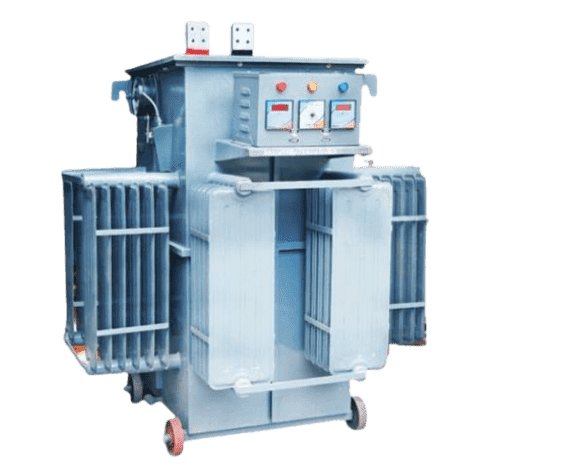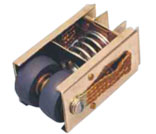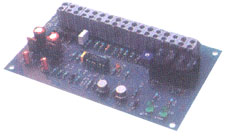-
Email Address
-
Location
390-A, Industrial Area-A, Ludhiana-141 003
-
Phone

Rectifiers
Jindal has 30 years of experience designing and engineering high-quality products, including rectifiers for efficient conversion of AC to DC. Their range covers 0-500 Volts and up to 30000 Amps, ideal for Electroplating, Anodising, Hydrogenation and Electrochemical processes. With in-house manufacturing, they guarantee 100% quality control and prioritize customer satisfaction.
Brief Specifications
- Input Voltage : 380-440 Volts, 3-phase 50hz. AC supply
- Output Voltage : Fixed Rated maximum DC voltage or variable from zero to maximum rated voltage.
- Output Current : Rated maximum DC current
- Temperature Rise : Less then 450 C above ambient at the top of the oil.
- Efficiency : 12V Rect - 82% , 24V Rect - 90%
- 100V Rect - 94%, 200V Rect - 96%
- More than 250V Rect - More than 97%
- Ripple Content : Less than 5%
- Insulation : 'A' class for oil cooled.
Starting Circuitry
Jindal's Rectifiers are designed to operate with 3-phase 50 Hz AC input supply, and they can work with a voltage range of 380 to 440 volts, accommodating for a wide range of voltage fluctuations. To ensure safety for personnel and the system, it is recommended to connect a proper protective device to the input of the rectifier in case of maintenance or fault occurrences.
DC Output Control
The variable output controls of Jindal's rectifiers enable users to control the voltage or current within a specific operating range by adjusting the input voltage to the main transformer primary. The DC output voltage can be varied smoothly from 0 to 100% using an ON LOAD roller type voltage regulator manufactured by Jindal.
- Jindal's rectifier equipment is wound with electrolytic prime grade copper to minimize power losses, which sets us apart from many other manufacturers who use aluminum conductors. Our equipment is designed with a generous capacity and is ideally suited for marginal overloading conditions.
- We employ a high-quality vertical rolling contact type voltage regulator that is wound with heavy copper strips. This type of regulator is ideal for industrial applications that require a 100% continuous duty cycle. Unlike conventional wire wound regulators used by other manufacturers, our carbon rollers move on both sides of the winding.
- DIODE : silicon diodes in-house and uses those with similar PIV batches and forward drops for equal load sharing and reduced power losses in the equipment.
- LAMINATION CORE : We incorporate imported CRGO lamination cores that have minimal power losses, resulting in superior equipment efficiency and energy bill savings.
- PAINTS : We incorporate imported CRGO lamination cores that have minimal power losses, resulting in superior equipment efficiency and energy bill savings.
- METER :Our rectifiers feature reliable and accurate AE/RISHAB make DC meters, ensuring precision and durability of the equipment.
- CONSTANT VOLTAGE CONTROLLER (CVC) (OPTIONAL) : We provide an optional CVC Electronic attachment with our rectifiers, which automatically maintains a constant output voltage or current based on the user's setting, regardless of input voltage variations.
- SERVICING : JINDAL'S has a well-established reputation in the market for its exceptional after-sales services, and this is evident from the positive feedback received from our satisfied customers.
Guarantee
We offer an unconditional 1-year guarantee against any manufacturing defects on our equipment. Installation, servicing, and spare parts will be provided free of charge during the guarantee period.


Advantage of Roller type Regulator as compared to Thyristorised Control

Comparison of Roller Type Regulator and Thyristorised Control :
| Roller Type Regulator | Thyristorised Control |
| 1. No wave form distortion at any load. Electrical wave form is like a moving wheel. For 50% Rated Voltage the Dia of wheel is reduced accordingly i.e. magnitude for a wave is decreased. | 1. Wave form distortion. It is like cutting the wheel by 50% and then moving the wheel i.e. wave form is cut as shown at full magnitude. |
| 2. Higher power factor of more than 0.95 is achieved. | 2. The power factor is lower between 0.5 to 0.9 |
| 3. The system is simple and can be repaired and maintained even by simple mechanic. | 3. The system is specified and needs specially trained Electronic Engineer to repair and maintain. |
| 4. The cost of spares is very negligible. | 4. The cost of replacement is very high. |
| 5. Over all losses are less. | 5. Over all losses are more. |
WHY THE REGULATOR CONTROL IS SUPERIOR TO THYRISTORISED CONTROL IN RECTIFIER
- The regulator technology used in our plating equipment is adopted from Germany and Europe, providing better performance and efficiency due to the factors explained in points 1 to 5.
- Other rectifier manufacturers have shifted to thyristors due to the limitations of sliding carbon brush type regulators.
- Other rectifier manufacturers claim that thyristor controlled rectifiers have lower losses compared to regulators. However, they often compare thyristors with sliding carbon type regulators. In contrast, we use a vertical coil type rolling carbon regulator with three times the copper section, resulting in lower losses of almost 1/6 or 20%.
- Our regulator features rollers that move on both sides of the coil to provide either +440V or +254V output. We design our rectifiers in a "Q" connection, in which the regulator current is half the line current, resulting in fewer losses and a longer lifespan.
